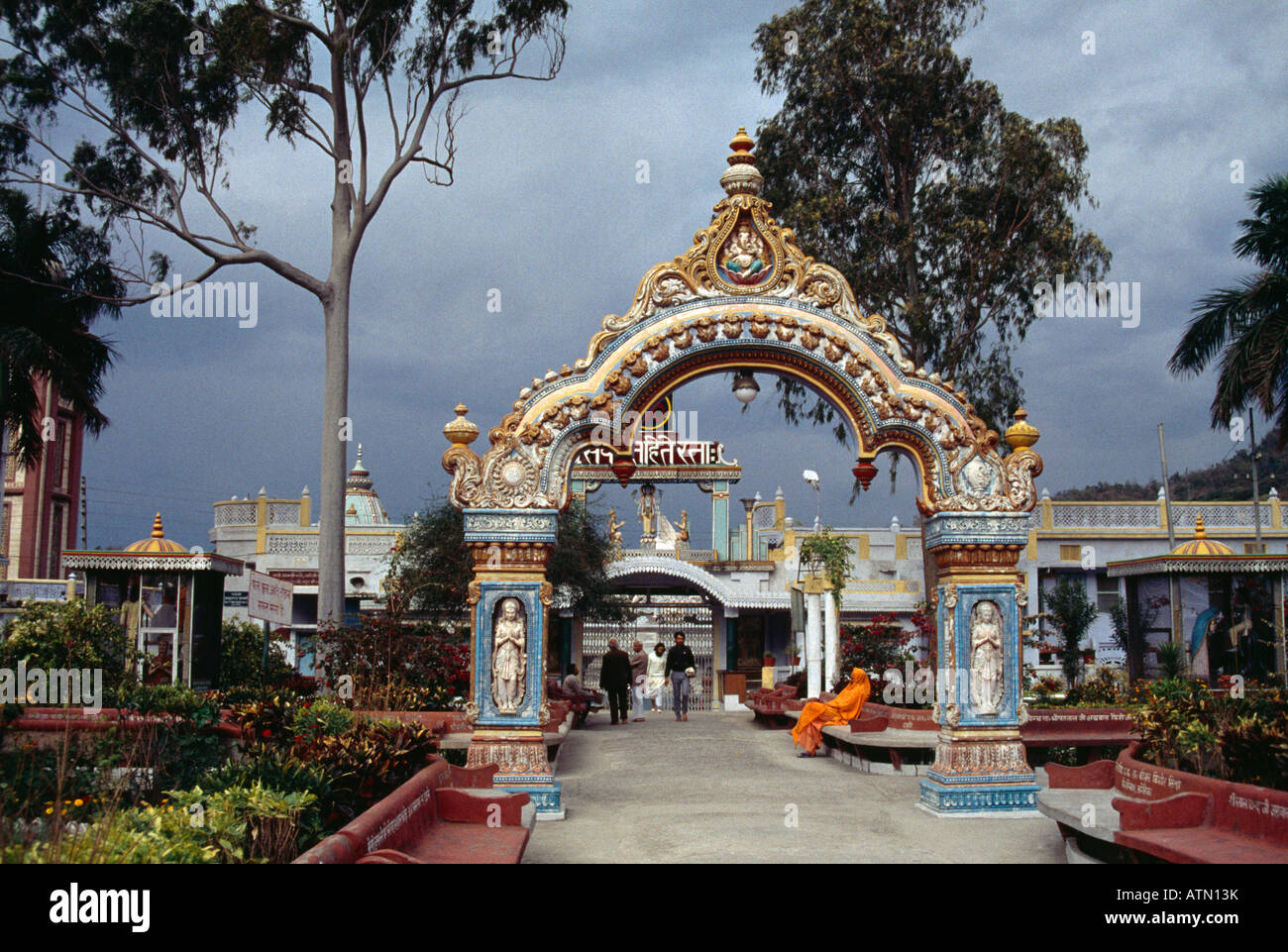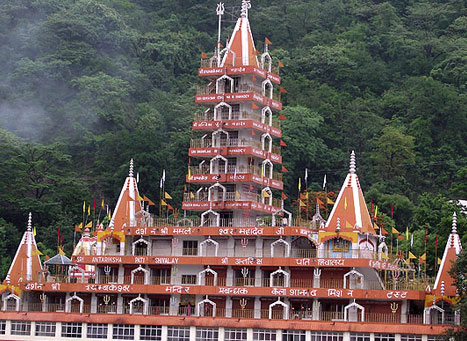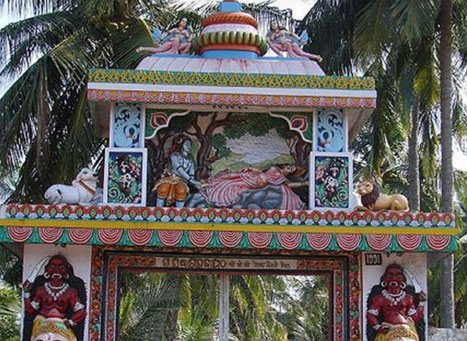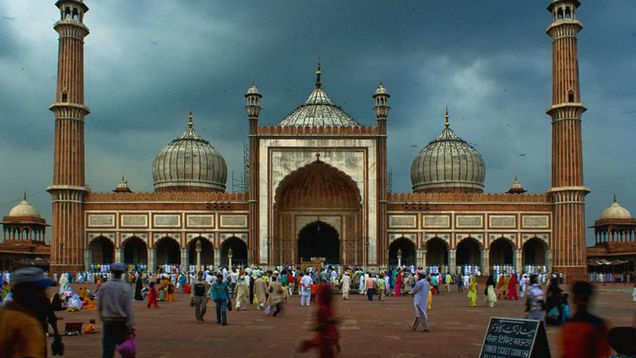Lakshman Temple in Rishikesh is a historic and spiritual gem. Nestled by the sacred River Ganges, it draws visitors from around the world.
Rishikesh, known for its serene landscapes and spiritual vibes, is home to Lakshman Temple. This temple holds immense significance in Hindu mythology and attracts pilgrims and tourists alike. The temple is believed to be the spot where Lakshman, the brother of Lord Rama, crossed the Ganges on a jute rope.
Today, it stands as a testament to ancient architectural brilliance and spiritual devotion. Visitors can experience peace and spirituality while marveling at the intricate carvings and serene surroundings. Whether you’re a devotee or a curious traveler, Lakshman Temple offers a deep dive into history and culture.

Credit: www.rishikeshtravelagent.com
Historical Significance
Rishikesh is a city that seamlessly blends spirituality with natural beauty, and among its many gems is the Lakshman Temple. This sacred site is not just a place of worship but also a window into the past. The historical significance of the Lakshman Temple makes it a must-visit for anyone interested in the rich tapestry of Indian history and mythology.
Ancient Legends
The Lakshman Temple is steeped in ancient legends that make it an intriguing destination. According to local lore, this is the very spot where Lakshman, the brother of Lord Rama, meditated to gain spiritual strength. The temple stands as a testament to Lakshman’s devotion and the divine energy that he harnessed here. Imagine standing at the same place where such pivotal moments in the Ramayana unfolded. It’s a surreal experience that transports you back in time.
Architectural Marvel
Beyond its spiritual significance, the Lakshman Temple is also an architectural marvel. The intricate carvings and detailed sculptures are a feast for the eyes. Each pillar and wall tells a story, showcasing the craftsmanship of ancient artisans. The temple’s design reflects the architectural styles prevalent during its construction, making it a visual and historical treasure. You’ll find yourself marveling at the precision and artistry, wondering how such beauty was created centuries ago.
Have you ever visited a place where the air felt charged with history and spirituality? That’s exactly what you’ll experience at the Lakshman Temple. Its historical significance is palpable, making it not just a place to see but a place to feel.
As you explore the temple, take a moment to reflect on the ancient legends and architectural marvels that make this site so special. Your visit to the Lakshman Temple will be more than just a sightseeing tour; it will be a journey through time and spirituality.
What other historical sites in Rishikesh have you found captivating? Share your experiences and insights in the comments below!
Location And Accessibility
Lakshman Temple in Rishikesh is near the famous Lakshman Jhula. Easily accessible by road, it offers a serene atmosphere. Visitors can enjoy the scenic beauty along the Ganges River.
The Lakshman Temple in Rishikesh is a serene spot that offers more than just a spiritual retreat. Nestled in the foothills of the Himalayas, this ancient temple not only captivates with its sacred ambiance but also with its stunning surroundings. If you’re planning a visit, understanding its location and how to get there can make your journey much smoother and more enjoyable. Let’s dive into the details of the geographical setting and travel routes that lead to this enchanting place.Geographical Setting
The Lakshman Temple is located in the heart of Rishikesh, a city known for its spiritual significance and natural beauty. Situated on the banks of the holy Ganges River, the temple offers breathtaking views of the flowing river and the lush green hills that surround it. The location is peaceful and serene, away from the hustle and bustle of city life. The temple is believed to be built where Lord Lakshman, the younger brother of Lord Rama, meditated and performed penance. Rishikesh itself is part of the Dehradun district in the state of Uttarakhand, India. It is often referred to as the “Gateway to the Garhwal Himalayas,” making it a popular destination for both pilgrims and adventure seekers.Travel Routes
Reaching the Lakshman Temple is relatively straightforward, whether you are coming from within India or from abroad. Here’s a breakdown of the travel routes: By Air: The nearest airport is Jolly Grant Airport in Dehradun, about 35 kilometers away from Rishikesh. From the airport, you can easily hire a taxi or take a local bus to reach the temple. The drive is scenic, taking you through winding roads and picturesque landscapes. By Train: Rishikesh has its own railway station, which is well-connected to major cities like Delhi, Haridwar, and Dehradun. If you prefer a more comfortable journey, Haridwar Railway Station, about 25 kilometers away, offers more frequent and convenient train services. From either station, local transport options like taxis and auto-rickshaws are readily available. By Road: Rishikesh is connected by a network of well-maintained roads. You can take a bus from various cities, including Delhi, Haridwar, and Dehradun. State-run and private buses offer both budget and luxury travel options. If you enjoy road trips, driving to Rishikesh can be an exhilarating experience. The roads are scenic, and you can stop at various points to soak in the natural beauty. Once you are in Rishikesh, the Lakshman Temple is easily accessible by local transport like auto-rickshaws, cycle-rickshaws, and taxis. If you enjoy walking, it’s a pleasant stroll from many of the popular hotels and ashrams in the city. Have you ever taken a spontaneous trip that turned out to be one of the best decisions you ever made? Visiting the Lakshman Temple could be that trip for you. With its peaceful setting and easy accessibility, it’s a place that invites you to slow down, reflect, and rejuvenate. What are you waiting for? Pack your bags and embark on a journey that promises both spiritual fulfillment and scenic beauty.Architectural Highlights
The Lakshman Temple in Rishikesh is a marvel of ancient architecture. Each element of the temple tells a story. The intricate designs and symbolic features make it a unique place to visit.
Design Elements
The temple boasts intricate carvings on its walls and pillars. These carvings depict various deities and scenes from Hindu mythology. The temple’s entrance is grand and welcoming. The towering spire, or shikhara, stands tall against the backdrop of the sky. It is adorned with beautiful sculptures and intricate patterns. The inner sanctum houses the idol of Lord Lakshman. This sacred space is simple yet elegant, emphasizing spiritual focus.
Symbolic Features
Every part of the Lakshman Temple holds symbolic meaning. The carvings often depict scenes from the Ramayana. These scenes remind visitors of Lord Lakshman’s devotion and bravery. The temple’s layout follows traditional Vastu principles. This ensures a harmonious flow of energy. The shikhara represents Mount Meru, the axis of the universe in Hindu belief. The temple’s location near the Ganges adds to its spiritual significance. The river is considered holy and purifying in Hinduism.
Spiritual Practices
The Lakshman Temple in Rishikesh is a haven for spiritual seekers. Its serene ambiance and rich history make it a perfect spot for meditation. People from all walks of life gather to practice spiritual rituals here. The temple’s spiritual practices offer a unique experience. They promote inner peace and connect worshippers with the divine.
Daily Rituals
Every day at the Lakshman Temple begins with a morning aarti. This ritual involves singing hymns and lighting lamps. The atmosphere gets filled with positive energy. Devotees participate to cleanse their minds and souls. They also offer flowers and fruits to the deity. This daily practice sets a peaceful tone for the day.
Midday rituals include chanting mantras. These mantras are sacred sounds believed to have divine power. Chanting helps in focusing the mind. It aids in achieving spiritual clarity. Evening aarti marks the end of the daily rituals. It is as vibrant and uplifting as the morning aarti. Devotees feel rejuvenated and spiritually fulfilled.
Festive Celebrations
The temple comes alive during festivals. One of the major celebrations is Diwali. The temple gets decorated with lights and flowers. Special prayers and rituals take place. Devotees from far and wide come to partake in the celebrations. The festive spirit brings a sense of community and joy.
Another significant festival is Ram Navami. This festival celebrates the birth of Lord Rama. The temple conducts elaborate rituals and recitations of the Ramayana. Devotees fast and offer prayers. The whole atmosphere is charged with devotion. These festive celebrations enhance the spiritual experience at the temple.
Cultural Impact
The Lakshman Temple in Rishikesh holds a significant place in the cultural fabric of the region. This ancient temple is more than just a place of worship. It is a symbol of historical and cultural importance. The temple’s impact can be seen in the community and among tourists who visit Rishikesh.
Community Involvement
The local community is deeply involved with the Lakshman Temple. Many residents participate in the daily rituals and festivities. These activities strengthen their cultural bonds. The temple hosts various events throughout the year. These events include traditional music and dance performances. They attract participants from neighboring areas. The temple also supports local artisans. It provides them with a platform to showcase their crafts. This boosts the local economy and preserves traditional skills.
Tourist Attractions
The Lakshman Temple is a major tourist attraction in Rishikesh. Visitors from around the world come to see its beauty. The temple’s architecture is a sight to behold. It features intricate carvings and designs. These reflect the rich heritage of the region. Tourists also enjoy the serene atmosphere of the temple. They find peace and solace in its surroundings. Nearby, the Ganges River offers additional activities. Visitors can take part in river rafting and other water sports. The temple, along with these attractions, makes Rishikesh a popular destination.
Natural Surroundings
Explore the natural surroundings of Lakshman Temple in Rishikesh. This temple is nestled in serene landscapes and offers breathtaking views.
River Ganges
The River Ganges flows gracefully near Lakshman Temple. Its crystal-clear waters add a sense of peace. The gentle sound of the river soothes the soul. People often come to take a dip and feel refreshed. The river is also a significant spiritual symbol. It enhances the holy atmosphere around the temple.
Scenic Beauty
The temple is surrounded by lush greenery. Tall trees and colorful flowers adorn the area. Majestic mountains provide a stunning backdrop. Walking through this natural beauty feels like a dream. The air is crisp and fresh, adding to the charm. Wildlife sightings are common, adding to the adventure. The scenic beauty makes every visit memorable.
Visitor Experiences
Visiting the Lakshman Temple in Rishikesh offers a unique experience. Many visitors share their stories, making it more special. These personal tales and guided tours provide insight into this sacred place. Each visitor has a different perspective, enhancing the overall experience.
Personal Stories
Many visitors share heartfelt stories about their visit to Lakshman Temple. Some feel a deep connection to the divine. Others find peace and tranquility. One traveler mentioned feeling a sense of calm immediately upon entering. Another visitor described the temple’s intricate carvings as mesmerizing. Each story adds to the temple’s allure.
Families often visit together, creating cherished memories. Children marvel at the temple’s architecture. Elders share spiritual insights. These moments create bonds and lifelong memories. Some visitors return yearly, making it a tradition. They feel a profound connection to this sacred place.
Guided Tours
Guided tours offer a deeper understanding of Lakshman Temple. Knowledgeable guides share the temple’s history and significance. They explain the legends associated with the site. Visitors learn about the architectural details and their meanings. This enhances the overall experience.
Guides often share lesser-known facts. These tidbits make the visit more interesting. They also answer questions, providing clarity. Many visitors find guided tours enriching. They leave with a greater appreciation of the temple. This makes the experience more fulfilling.

Credit: indiancolumbus.blogspot.com
Preservation Efforts
The Lakshman Temple in Rishikesh holds immense cultural and historical significance. Over time, many have recognized the need to preserve this ancient structure. Preservation efforts ensure that future generations can experience and learn from this heritage site. The community and authorities work together to maintain the temple’s beauty and integrity.
Conservation Projects
Local authorities have initiated several conservation projects. These projects aim to protect the temple’s architecture. Experts regularly inspect the structure for any signs of damage. They use traditional methods to repair and restore the temple. This approach maintains the temple’s original charm. Special attention is given to preserving the intricate carvings and murals.
Volunteers also play a crucial role in these efforts. They help clean and maintain the temple premises. Educational programs are conducted to raise awareness about the importance of conservation. These programs encourage community participation. The collective effort ensures the temple remains well-preserved.
Future Plans
Future plans include the development of a detailed preservation strategy. This strategy will address long-term conservation needs. Authorities plan to use advanced technology for monitoring the temple’s condition. They will also seek international expertise for specialized restoration techniques.
Another focus is on promoting sustainable tourism. This ensures that visitor activities do not harm the temple. Informative tours and guides will educate visitors on the importance of preservation. These efforts aim to maintain the temple’s sanctity while welcoming tourists.
The community remains committed to these preservation efforts. With continued support, the Lakshman Temple will stand strong for years to come.

Credit: www.alamy.com
Frequently Asked Questions
What Is The Story Behind Lakshman Jhula Rishikesh?
Lakshman Jhula in Rishikesh is a famous suspension bridge. It is believed to be where Lord Lakshman crossed the Ganges on jute ropes. The current iron bridge was built in 1929. It connects the villages of Tapovan and Jonk. Visitors enjoy its historical significance and scenic views.
Which Temple Is Famous In Rishikesh?
The Trimbakeshwar Temple, also known as Tera Manzil Temple, is famous in Rishikesh. It is a 13-story structure by the banks of the Ganges.
Who Is The God Of Lakshmana Temple?
The god of Lakshmana Temple is Lord Vishnu. The temple is dedicated to him and showcases beautiful carvings.
How High Is Lakshman Temple?
The Lakshman Temple stands approximately 25 meters (82 feet) high. This historical structure is located in Khajuraho, India.
Conclusion
The Lakshman Temple in Rishikesh holds deep spiritual significance. Its serene ambiance offers peace to all visitors. This sacred site connects history and devotion seamlessly. Whether you’re seeking tranquility or cultural insight, this temple delivers. Visiting the Lakshman Temple enriches your Rishikesh experience.
Don’t miss this enchanting destination on your journey. It promises to leave a lasting impression. Discover the spiritual essence and historical charm here. Visit soon to explore its timeless beauty.
{ “@context”: “https://schema.org”, “@type”: “FAQPage”, “mainEntity”: [ { “@type”: “Question”, “name”: “What is the story behind Lakshman Jhula Rishikesh?”, “acceptedAnswer”: { “@type”: “Answer”, “text”: “Lakshman Jhula in Rishikesh is a famous suspension bridge. It is believed to be where Lord Lakshman crossed the Ganges on jute ropes. The current iron bridge was built in 1929. It connects the villages of Tapovan and Jonk. Visitors enjoy its historical significance and scenic views.” } } , { “@type”: “Question”, “name”: “Which temple is famous in Rishikesh?”, “acceptedAnswer”: { “@type”: “Answer”, “text”: “The Trimbakeshwar Temple, also known as Tera Manzil Temple, is famous in Rishikesh. It is a 13-story structure by the banks of the Ganges.” } } , { “@type”: “Question”, “name”: “Who is the god of Lakshmana Temple?”, “acceptedAnswer”: { “@type”: “Answer”, “text”: “The god of Lakshmana Temple is Lord Vishnu. The temple is dedicated to him and showcases beautiful carvings.” } } , { “@type”: “Question”, “name”: “How high is Lakshman Temple?”, “acceptedAnswer”: { “@type”: “Answer”, “text”: “The Lakshman Temple stands approximately 25 meters (82 feet) high. This historical structure is located in Khajuraho, India.” } } ] }



